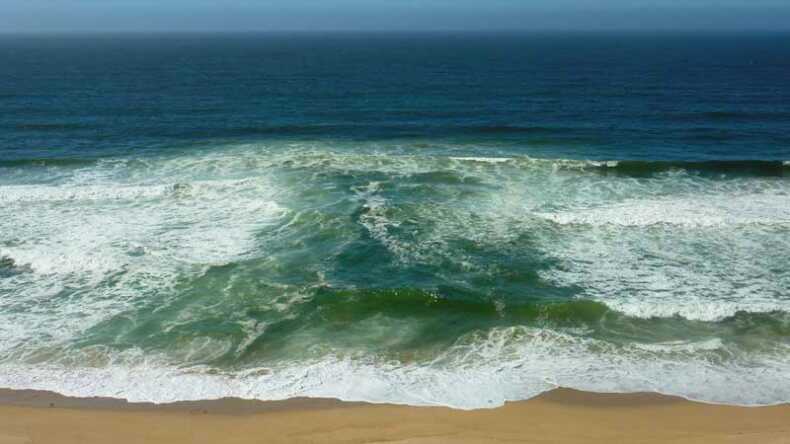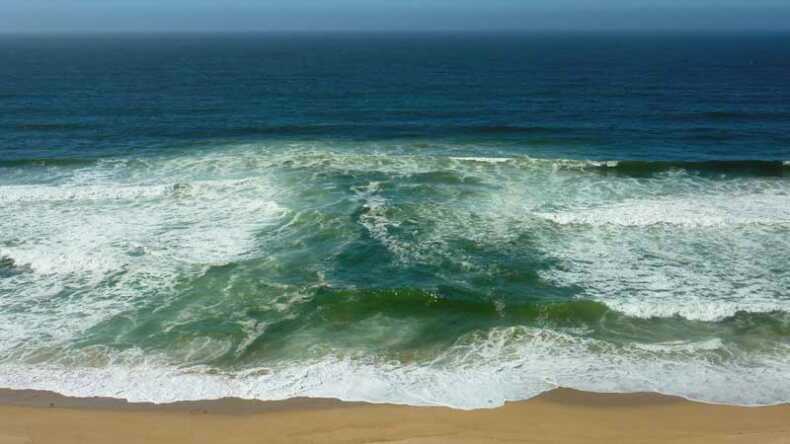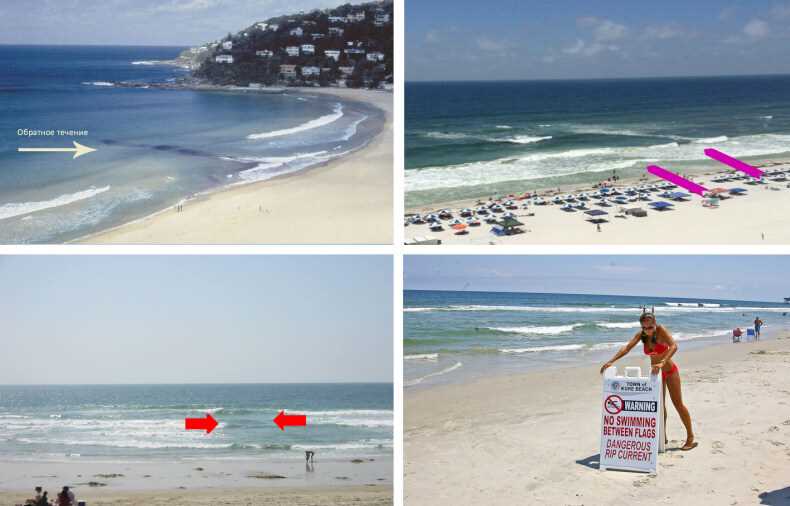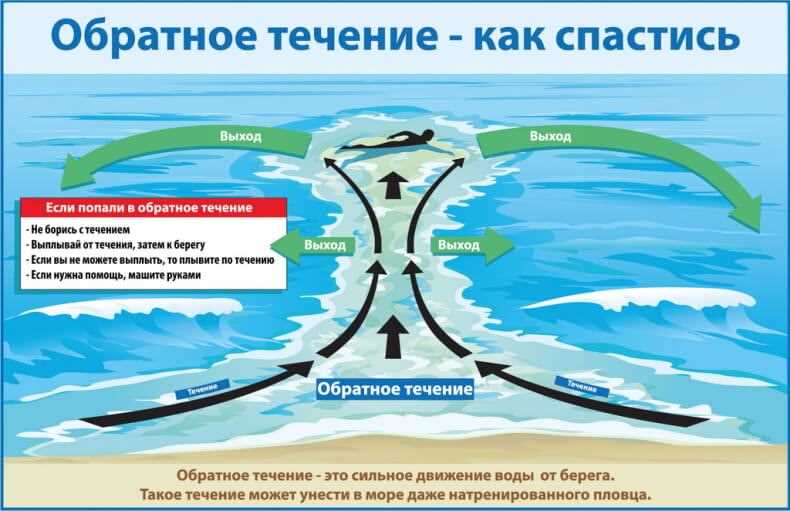Many Russians on the coast of Thailand for the first time have no idea how dangerous reverse currents are quite common phenomenon in marine areas subject to tides. I do not want to scare anyone, but most cases of drowning in Thailand is associated with it. And the cause of the tragedy is often not so much his insidiousness – it occurs quite unexpectedly, but the lack of knowledge of the basic rules of how to act, getting into this stream.
Reverse currents in Thailand are everywhere, their strength depends directly on how close the coastal area is to the open ocean and whether there are any obstacles (islands) between them. This is why reverse currents in Phuket (best Phuket Island Beaches) are most frequent and strong.
What is this phenomenon?
Reverse currents in the sea always occur near the shore. The reason for this phenomenon is that the masses of water, which are pushed up against the shore by the tidal wave or surf, have to go back out into the ocean. At some point in time, finding the point where the force of the surf or tide is the least, they break through them in the opposite direction. Such points of weakening in the wave front occur where there are peculiar troughs perpendicular to the shoreline in the bottom topography. The reverse current expands and deepens them. On the beaches of the west coast Phuket Island the width of the channels of such currents reaches 15 meters, and their length is 20-30 meters.
Rip currents in the ocean are of a slightly different nature. As a rule, they arise from the collision of moving water with obstacles (islands, reefs). It is not uncommon for them to close with the main current of water in a circle several nautical miles in diameter. Such currents can be dangerous only to those who like to swim away. It is virtually impossible for a swimmer to get out of it.
When does it occur?
Rip current in Thailand, as it is scientifically called, can occur both during the daily tides and due to weather conditions. During storms, common between May and October, rip currents arise chaotically, posing a particular danger to those unfamiliar with local conditions. Although one should not exaggerate local awareness of this issue either. In a big storm, a back current can tear itself a new channel in a sandy beach in a matter of minutes.
How do you recognize it?
Rip Current in Thailand is so common and widespread that you can often see two red flags or Rip Current hangars placed at the water’s edge on the beaches. They denote an existing and long-known backcurrent channel. It is very dangerous to enter the water between them. The rescue service and the police are strictly enforcing the prohibition line for tourists. For the sake of clarity, there is a large fine for this act. If there are no such flags, then you can only help your natural instincts. It is true that the signs of reverse currents are so obvious that you don’t have to be an experienced pathfinder.
As a rule, such a channel is noticeable in a solid band of surf as a narrow section with relatively calm water. In addition, the water in this area is murky. Bottom slurry constantly swirls in the water column, resembling boiling soup.
What to do when you’re in a rip current?
An answer to the question, “how not to drown on holiday in Thailand?”, is not straightforward. Much depends on your own discretion, and also on your knowledge of the safety rules of getting into a rip current.
1. The first thing to know is that it is an elemental, almost insurmountable force, the only way to emerge victorious from its rivalry with is by stealth. It is best not to let the reverse current take you over completely. If you accidentally entered the rip trough and felt that the current started dragging you away from the shore, then carefully, trying as much as possible to keep your feet close to the sand, go ashore. If it picks you up, it is useless to swim against the current, the speed of which can reach 10 km per hour.
2.If the current has already carried you into the ocean, try to keep your cool and remember that the rip chute is not that wide. Swimming perpendicularly to the current you will quickly reach the edge of the stream. However, during this time you may be carried into the sea for a hundred meters. If the sea is calm enough and you save most of your strength, you can get ashore on your own.
3. Once in the return flow, do not be overly frightened. There have never been any instances where it pulled swimmers underwater. So don’t flounder or scream. Apart from the fact that it will save you the strength needed to return to shore, you will not be swallowed by the salt water. The strong brine of the tropical sea corrodes the gastrointestinal tract and causes blood clotting. This is the cause of a swimmer’s death in most cases.
The brine of the tropical sea corrodes the gastrointestinal tract and causes blood clots.
4.If there is no emergency service on the beach, someone from your company must be sure to stay on shore, otherwise there will simply be no one to signal a distress. Provide some type of signal indicating danger.
4.
5. Be sensible and don’t assume that if you are a good swimmer there is absolutely nothing to fear. As a rule, those who drown are those who are not afraid of anything at all and swim too far. The rule of nautical practice, “consider yourself closer to danger than you are,” is the main guarantee of your well-being.
6. If you have consumed Thai alcohol, even in the smallest amounts, refuse to swim at all. This is a general rule for all bodies of water, from village ponds, to the ocean waters of Thailand.
7.The presence of an emergency service on the beach does not mean that you will be extracted from the water in seconds. It will take some time to start the engine, get out to sea and find the victim. And it can be very difficult to see a person without a brightly colored life jacket in the waves.
8. If you were carried away by the rip current, try using the tidal current and dodging the waves covering with the head, not hurrying to paddle to the shore. This saves strength and gets you aboard the rescue boat more quickly.
Total
.




